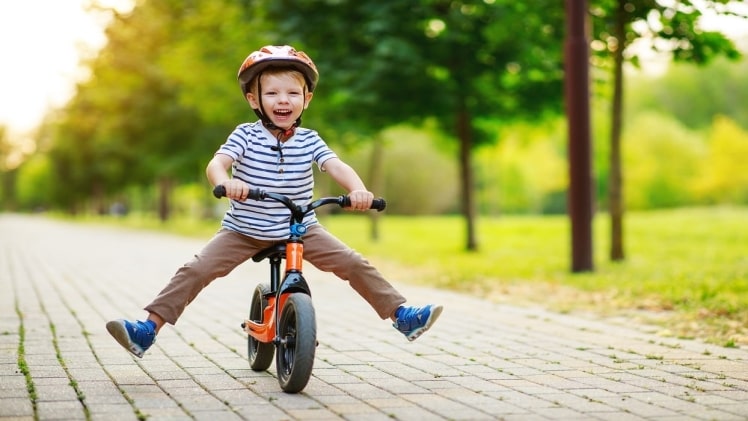Cycling is a great activity filled with fun. In fact, balance bikes are more popular now than ever before. How do you determine which style, size, and material are ideal for your child when so many options exist?
Here is a brief guide to the important points to consider when buying a balancing bike to help you make the correct decision.
1. Size
The most frequent metric used to define the sizes of classic kids’ pedal cycles is tyre size. However, while most balancing bike manufacturers emphasise wheel size, seat height range is equally significant.
A smart place to start when choosing a balancing bike is to measure the child’s inseam while standing on a flat surface with shoes on. Then, contrast this inseam measurement with the minimum and maximum saddle heights for a certain balance bike.
This bike is currently too large for your child if the inseam measurement is less than the minimum indicated saddle height. Similarly, if the maximum saddle height is less than the child’s inseam, the bike may be too small, but this is a minor concern.
2. Material
Balance bikes are made of three different materials: wood, metal, and composite. Each material has advantages and disadvantages, so select the one that best suits your youngster.
- Wood: Wooden balancing bikes are lighter, come in various fashionable forms, and are more environmentally friendly. Wooden bikes, on the other hand, are not as adjustable as metal or composite cycles.
- Metal: Metal balancing bikes are frequently made of steel or aluminium and feature seats that may be adjusted as your child develops. Steel balancing bikes are heavy, but aluminium bikes are lighter but less durable. Both are prone to rust if left outside.
- Composite: These balance bikes are often composed of heavy-duty composite material. Composite plastic balancing bikes are extremely sturdy and will not crack, rust, or break.
3. Cost
Cost is certainly an important consideration for many parents, and what you pick largely relies on the bike’s intended usage.
A more costly bike will normally be lighter and last longer, have better components, better customer service, and have a higher resale value. In addition, most high-quality children’s bikes use real bike parts that can be repaired and changed by a bike shop to keep the bike working smoothly for longer.
Cheaper bikes might frequently resemble their more costly counterparts – there are countless knockoff brands – but they lack attention to detail and construction quality.
3. Frame Material
Balance bikes may appear identical – two-wheeled, pedal-less mini-bikes – but the materials utilised in their manufacture can vary greatly, impacting how the bike rides and how much it costs.
Steel, alloy, wood, plastic, and even carbon fibre are common materials used to make balanced bike frames. While steel is the most durable of these materials, vital for withstanding the rigours of playing, steel bikes are among the heaviest alternatives and often lie at the higher end of the price range. Steel motorcycles rust as well if kept outside or neglected.
Aluminium is another expensive material, although it may frequently result in a lighter bike. Aluminium has the added benefit of being rustproof and long-lasting.
4. Safety
Another key factor to consider while selecting a balancing bike is safety. Check that the bike’s fasteners are rounded or recessed rather than exposed ones that may harm young legs. Also, look for handlebar grips with a rounded rubber knob on the end. These will safeguard your child’s hands in the event of a fall and keep the handlebars from scratching your walls.

